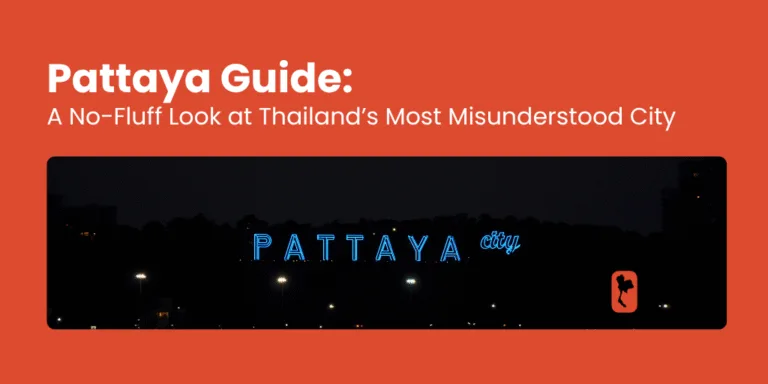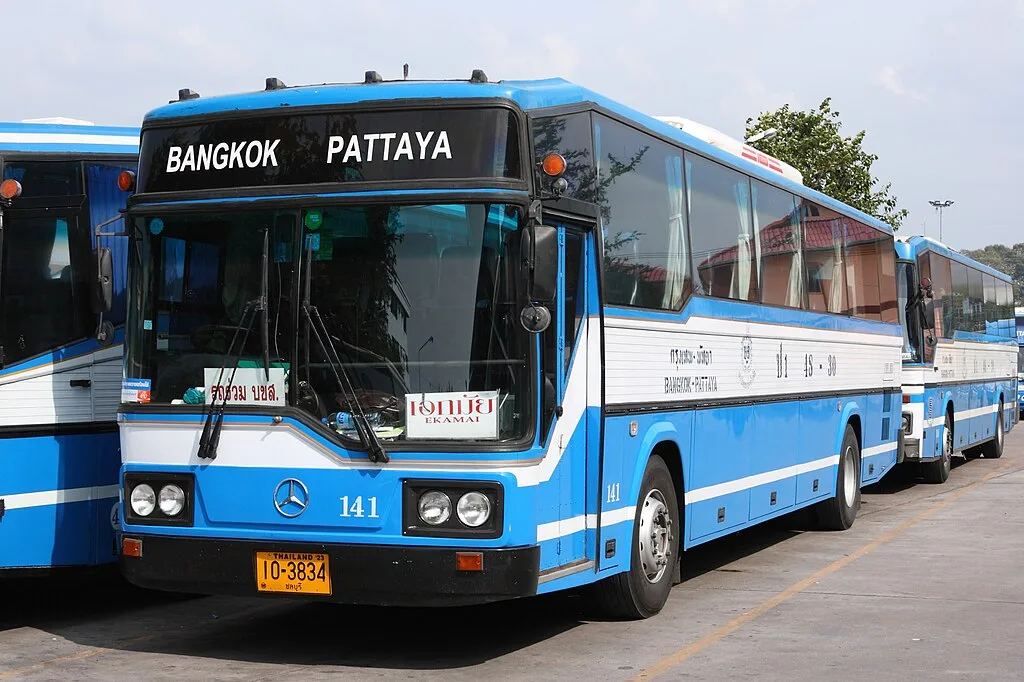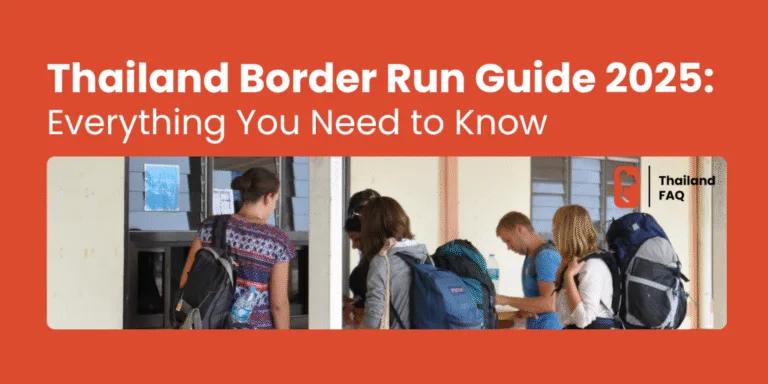Pattaya guide. It’s a phrase that carries assumptions, mixed reputations, and depending on who you ask, a raised eyebrow. For some, it’s a party town. For others, it’s a surprisingly livable and practical place to call home. And the truth? It’s probably both.
Whether you’re coming for a beach getaway, considering a longer remote work stay, or even thinking about living here as an expat, this guide gives you a clear, no-nonsense picture of what to expect.
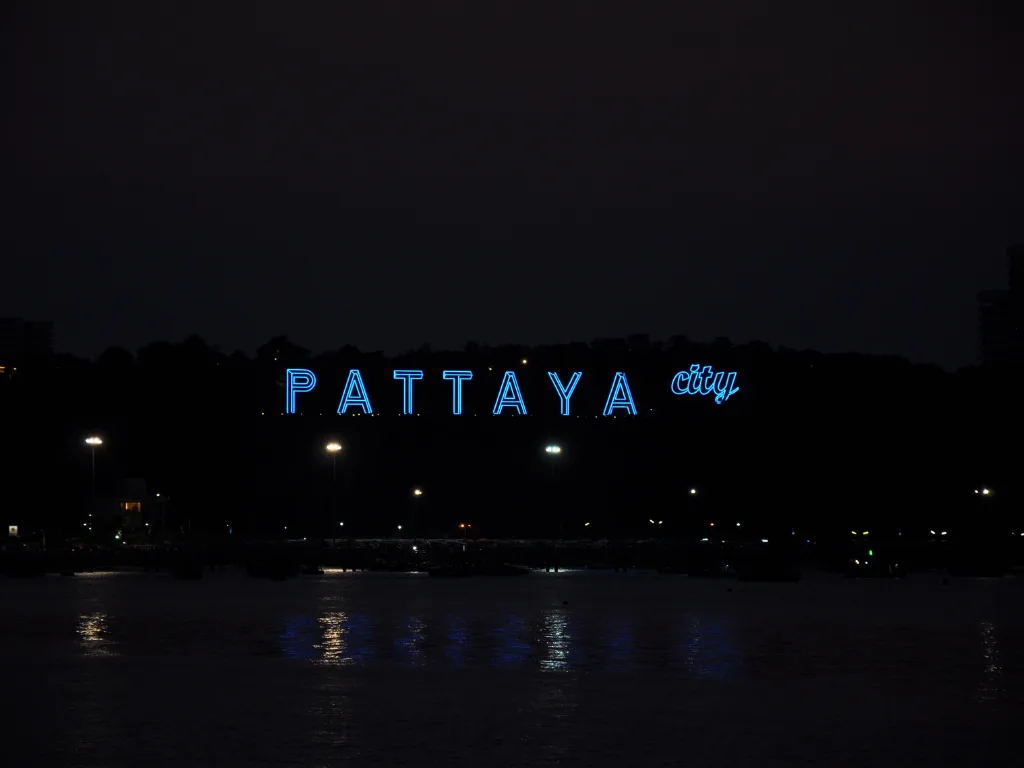
What Makes Pattaya Different? Let’s Start with the Pattaya Guide
Pattaya doesn’t try to be something it’s not. It’s direct, busy, sometimes messy, but also incredibly convenient. You get the real infrastructure right on the coast, with high-speed internet, global food options, and affordable condos just a few minutes from the water.
This isn’t a sleepy beach village. It’s a city with a beach attached. If you like contrast, fast access to daily needs, and a little edge, Pattaya works better than it gets credit for.
Getting To and Around Pattaya
Most visitors reach Pattaya by land, and for now, that’s the standard. The city doesn’t have its own airport, but you’re only about 2 to 2.5 hours away from Bangkok’s two major airports: Don Mueang (DMK) and Suvarnabhumi (BKK). That makes getting here fairly straightforward.
One of the easiest ways is to book a private car directly from the airport. It’s fast, comfortable, and ideal if you’re arriving with luggage or a group. If you’re watching your budget, the airport bus to Pattaya is a reliable and frequent option.
You can also catch a van or bus from Bangkok’s Ekkamai or Mo Chit stations. They depart throughout the day, take about 2 to 3 hours, and cost less than 200 baht.
Quick facts:
- Travel time from Bangkok is 2 to 3 hours
- Vans and buses are the most affordable
- Private transfers start around 1,200 baht
- Booking portals like 12go.asia or Bookaway are useful
If you’re traveling elsewhere in Thailand, Pattaya connects easily to destinations like Koh Chang, Rayong, and even Hua Hin. The ferry from Pattaya to Hua Hin is a scenic shortcut across the Gulf of Thailand that some travelers enjoy as an alternative to a long drive.
Walking is fine for short distances, especially along the beach or between major streets in Central Pattaya. But to explore more comfortably, you’ll want transport.
Here are your best options:
Grab and Bolt
These ride apps are widely available and easy to use. They’re more predictable than taxis and usually offer better prices. If you’re staying longer, downloading both apps is worth it.
Baht Buses (Songthaews)
The blue pickup trucks with bench seating are Pattaya’s signature transport. Locals use them constantly. Just hop on, ride until your stop, ring the buzzer, and pay 10 baht. There’s no exact schedule, but the system works once you get used to it.
Scooters
Renting a scooter is the most flexible way to get around. Rates start at 2,500 to 4,000 baht per month. That said, Pattaya traffic isn’t ideal for beginners. If you’ve never ridden one before, this may not be the place to start.
Taxis
Available but not very common for daily use. Most drivers won’t use the meter, and fares tend to be higher than ride apps. Still, they’re useful for airport transfers or longer rides outside the city.
Pro tip
If you’re planning to stay for a while, consider getting a Thai SIM card and setting up local ride apps early. It’ll make everything easier.
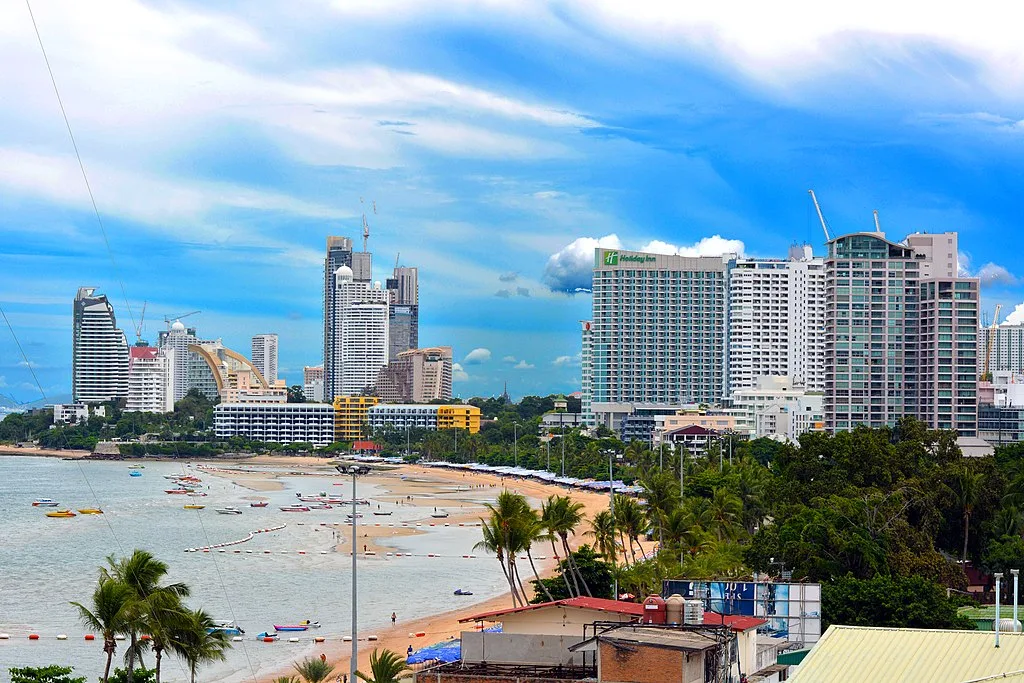
Where to Stay in Pattaya
Where you stay will shape your experience. Let’s have a look at the different areas!
Central Pattaya
You’re right in the middle of it all. The beach, malls, bars, and restaurants are right there. It’s ideal for short visits or if you like to be in the action, though it’s busy and not exactly quiet.
Jomtien
Here it’s calmer. It’s where many long-term visitors and digital nomads end up. You still get plenty of restaurants and nightlife but without the constant noise.
Pratumnak Hill
Pratumnak Hill is in between, both geographically and in vibe. It’s quieter than Central Pattaya but still close enough to everything.
Naklua and Wongamat
Naklua and Wongamat are more residential. These areas appeal to those who prefer a more peaceful environment. The beaches are cleaner and the atmosphere is relaxed.
Condos are easy to find through sites like FazWaz or Hipflat, and many long-term rentals are listed directly in local Facebook groups. Prices are lower than in places like Bangkok or Phuket, especially outside of peak season.
Food in Pattaya: Quirky Street Food to International Cuisine
Pattaya has something for every kind of eater. If you’re keeping things simple, you can grab a steaming bowl of noodles or a plate of fried rice for under 50 baht at almost any street corner. Local food is quick, flavorful, and doesn’t need much planning. You’re never far from a decent meal.
But if you feel like something different, you’ve got options. Italian pizza, Indian curries, Korean BBQ, Japanese ramen, and even Russian comfort food are easy to find. The international food scene here is much broader than most expect.
Seafood deserves a mention on its own. Fresh grilled prawns, squid, and whole fish are sold along the beach and in local markets like Naklua. Some visitors come back just for that alone.
For those who lean toward health-conscious eating, Jomtien and Pratumnak have plenty of smoothie cafes, plant-based menus, and Western-style brunch spots. You won’t struggle to find almond milk or a good avocado toast.
Whether you’re eating on a stool by the roadside or settling into a white-tablecloth dinner with ocean views, food in Pattaya tends to be easy, accessible, and often better than you’d expect.
Things To Do
Pattaya is often seen through the lens of its nightlife, but there’s a lot more beneath the surface. Whether you’re into beaches, temples, gardens, or quirky attractions, there’s always something to explore. You can keep it low-key or pack your schedule. Both work here.
If you’re craving nature, take a ferry to Koh Larn. It’s about 40 minutes away and offers clear turquoise water and soft sand beaches. Once you arrive, rent a scooter and cruise around the island at your own pace. It’s a great day trip and an easy escape from the city.
Closer to town, Nong Nooch Tropical Garden offers a surprisingly peaceful experience. The grounds are well kept, with manicured gardens and shaded walkways. It’s a popular tourist spot, but still manages to feel relaxing if you go early in the day.
For a scenic view, head up to Big Buddha Hill (Wat Phra Yai). There’s a panoramic lookout nearby that gives you a full view of the bay and skyline. Another quieter option is the viewpoint near Pratumnak Hill, which many locals prefer for sunsets.
Markets are everywhere. Thepprasit Night Market runs on weekends and has a little bit of everything, from local food stalls to clothing and electronics. If you’re looking for something more styled for visitors, Pattaya Floating Market offers boat-side shopping and snacks in a more staged, but still enjoyable, setting.
Culture is here too. The Sanctuary of Truth is a huge wooden structure filled with carvings and detail. It’s still being built, which adds a strange but interesting character to it. You’ll probably take more photos here than you expect.
And if you’re in the mood for something different, Pattaya has a whole catalog of offbeat attractions. Think 3D trick art museums, upside-down houses, or cabaret shows that are more about spectacle than subtlety.
You don’t have to love everything. Pattaya gives you a mix. Try what sounds fun, skip what doesn’t. That’s the beauty of it. You can shape the city into whatever kind of trip you want it to be.
Digital Nomads in Pattaya
Pattaya might not be the first place you think of for remote work, but it’s surprisingly good for it.
Internet is fast. Most condos include fiber, and mobile data is reliable. There are a few co-working spaces like CoCo Work and BeachHub, and many cafés are happy to host laptop users for hours at a time.
There’s not a huge nomad community here, which might be a downside if you’re looking for constant meetups. But if you’re focused on work and like doing your own thing, it’s a solid choice.
Healthcare in Pattaya
Getting sick here isn’t the end of the world. In fact, it’s often easier than back home.
Local clinics are fast and cheap. You can walk in without an appointment and be out the door, medicine in hand, within 20 minutes. Expect to pay 300 to 800 baht depending on the issue.
For anything more serious, the major hospitals are well-equipped, clean, and have English-speaking staff. You can pay out of pocket or use insurance. Either way, the process is usually smooth.
Scams and Street Smarts
Pattaya is safe, but you still need to use your head.
Some bars add surprise charges to your bill. Some vendors inflate prices if they think you won’t question it. And some rental listings look great in photos but turn out disappointing in person.
Avoid withdrawing cash from freestanding ATMs. Use ones located inside bank branches whenever possible.
Always read the fine print before renting a condo or motorbike. Ask what’s included. Take photos of any existing damage. And never leave your drink unattended in nightlife areas.
Cost of Living in Pattaya
Living in Pattaya can be very affordable, or not, depending on your habits.
Someone living modestly, eating mostly local food, and staying in a small condo can get by on 30,000 baht per month. Add in Western meals, imported groceries, or a sea-view apartment, and that number climbs quickly.
Here’s a rough breakdown:
- Studio condo: 8,000 to 15,000 baht per month
- Street food meal: 50 to 80 baht
- Restaurant meal: 200 to 400 baht
- Co-working pass or café budget: 2,000 to 4,000 baht
- Scooter rental: 2,500 to 4,000 baht
- Gym membership: around 1,200 baht
Utility bills usually stay low unless you run the air conditioning all day.
Living Long Term in Pattaya
Many people come for a month and quietly stay for six. That’s not unusual.
As you settle in, you might start looking for a condo with a bit more comfort. Maybe something with a pool, or a place on a quieter street near Jomtien or Pratumnak. You’ll probably start shopping at local markets instead of convenience stores, and maybe pick a favorite noodle stall without realizing it.
Groceries are affordable if you stick to Thai products. Imported foods, wine, and cheese are available but pricey.
For healthcare, you’re well covered. Bangkok Hospital Pattaya and Pattaya International are modern, English-speaking, and quick. You don’t need insurance for minor visits, but expat health plans are available and relatively cheap.
Final Thoughts
Pattaya isn’t trying to be perfect. It’s trying to be functional. And strangely, it succeeds.
You get the beach and city in one place. You get Western comforts without Bangkok traffic. You get a mix of locals, tourists, and long-term residents all figuring out how to coexist.
It’s not everyone’s favorite place, and that’s fine. But if you’re looking for a place to live, work, or just breathe a little without spending a fortune, Pattaya might just be what you didn’t know you were looking for.
Try living in Pattaya for a month. That’s usually enough to know if it’s a place you can call home or just one you pass through with a few good stories.
Related Posts:

